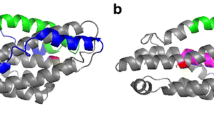Abstract
Huntington’s disease (HD) is an autosomal dominant degenerative disease of the central nervous system manifested by involuntary movements (chorea), psychiatric manifestations, and cognitive impairment with a variable age at onset. This variability is mainly attributed to genetic factors. The so-called aging genes [e.g., those for apolipoprotein E (APOE) and presenilin-1 (PS-1) have been implicated in determining the age at onset of Alzheimer’s disease, a disease sharing common clinical features with HD. In 60 unrelated patients suffering from HD (mean age at onset 40.1 years, range 20–65) we determined number of CAG repeats and the distribution of the APOE alleles (ɛ2, ɛ3, ɛ4) and PS-1 alleles. The results showed that: (a) The age at onset was higher in the group of patients with the ɛ4 allele (51.6 vs. 38.0 P < 0.002), (b) The correlation between the age at onset and the number of CAG repeats was strong in patients with the ɛ3/ɛ3 genotype while it was not detected in patients with ɛ3/ɛ4 genotype. (c) No correlation was found between age at onset and PS-1 alleles. In conclusion, APOE seems to be a significant factor influencing the age at onset of Huntington’s disease.
Similar content being viewed by others
Author information
Authors and Affiliations
Additional information
Received: 13 May 1998 Received in revised form: 9 December 1998 Accepted: 31 December 1998
Rights and permissions
About this article
Cite this article
Panas, M., Avramopoulos, D., Karadima, G. et al. Apolipoprotein E and presenilin-1 genotypes in Huntington’s disease. J Neurol 246, 574–577 (1999). https://doi.org/10.1007/s004150050406
Issue Date:
DOI: https://doi.org/10.1007/s004150050406




